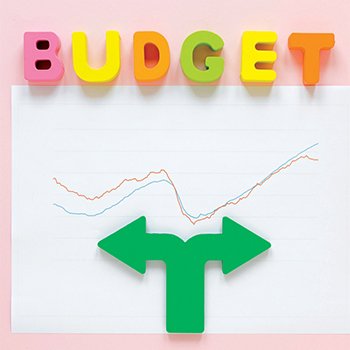How Viksit is the Budget?

The first Union Budget of the newly elected government, and the seventh successive budget presented by Finance Minister Nirmala Sitharaman, is broadly a continuum of the Interim Budget of February. The focus being Viksit Bharat, it seeks to address issues of employment, skilling, medium and small-scale enterprises and the middle class, through tweaks and interventions in agriculture, manufacturing and infrastructure. All in all, a multi-pronged approach

The nation’s Budget 2024 was tabled on 23rd July. This was in continuation of the Interim Budget tabled on 1st February. This is the first budget of the new government formed after the General Elections, and the seventh successive budget presented by Finance Minister, Hon’ble Nirmala Sitharaman.
The Budget 2024 has been termed as a roadmap in pursuit of ‘Viksit Bharat’ by the government. As stated in the Budget speech, the four pillars of the stated four castes which have been focused are Annadata (farmer), Garib (poor), Mahilayen (women), Yuva (youth). The theme of the budget has been centred around Employment, Skilling, MSMEs, and Middle Class.
The priorities set for Viksit Bharat are:
- Productivity and resilience in Agriculture
- Employment and Skilling
- Inclusive Human Resource Development and Social Justice
- Manufacturing and Services
- Urban Development
- Energy Security
- Infrastructure
- Innovation, Research and Development
The break-up details of the above are:
Agriculture:
- Comprehensive review of agriculture research set-up to bring focus on raising productivity and developing climate resilient varieties.
- National Co-operation Policy for systemic, orderly and all round development of the co-operative sector.
- Vegetable production and supply chain to be emphasised by promoting FPOs, co-operatives and start-ups in reference to supply chains for collection, storage and marketing.
- Natural farming to be promoted and for that one crore farmers to be initiated within two years.
- Financing for shrimp farming, processing and export to be facilitated through NABARD.
- Digital Public Infrastructure for coverage of farmers and their lands in three years. Digital Crop Survey in 400 districts and issuance of Kisan Credit Cards.
"The budget has been termed as a roadmap in pursuit of ‘Viksit Bharat’ by the government. As stated in the Budget speech, the four pillars of the stated four castes which have been focused are Annadata (farmer), Garib (poor), Mahilayen (women), Yuva (youth)"
Employment and Skilling:
The PM’s package for employment linked incentive –
- One month wage to new entrants in all formal sectors in three instalments up to ₹ 15,000.
- The government to reimburse EPFO contributions of employers up to ₹ 3,000 per month for two years for all new hires.
- Linked to first time employees, incentive to both employee and employers for EPFO contributions in the specified scale for the first four years.
- Facilitating higher participation of women in the workforce by setting up working women hostels.
- Loans up to ₹ 7.50 lakhs with a guarantee from a government promoted fund.
- Financial support for loans up to ₹ 10 lakh for higher education in domestic institutions.
Inclusive Human Resource Development:
- Purvodaya Scheme of eastern states of Bihar, Jharkhand, West Bengal, Odisha and Andhra Pradesh for generating economic opportunities.
- Allocation of more than ₹ 3 lakh crore for schemes benefitting women and girls.
- Improving the socio-economic condition of tribal communities covering 63,000 villages and benefitting 5 crore tribal people.
- More than 100 branches of Indian Post Payment Banks to be set up in the North Eastern region.
- Development of Andhra Pradesh with financial support for its capital city construction and completion of the Polavaram Irrigation Project.
Manufacturing and Services:
- Credit guarantee scheme for MSMEs in the manufacturing sector.
- Twelve industrial parks under the National Industrial Corridor Development Programme.
- Rental housing with dormitory type accommodation for industrial workers in PPP mode.
- Critical Minerals Mission for domestic production, recycling and overseas acquisition.
- Strengthening of tribunals and appellate tribunals to speed up insolvency resolution.
- Scheme for providing internship opportunities in 500 top companies, to one crore youth in 5 years. Allowance of ₹ 5,000 per month with one-time additional assistance of ₹ 6,000 through CSR funds.
Urban Development
- Stamp Duty- Encouraging states to cover stamp duties on properties purchased by women.
- Street Markets - Promoting schemes to develop 100 weekly ‘haats’ or street food hubs in select cities.
- Transit Oriented Development - For 14 large cities with population above 30 lakhs.
- Water Management - in 100 large cities.
- PM Awas Yojana for one crore urban poor and middle class families with an investment of Rs 10 lakh crore.
- Promoting transparent rental housing markets.
Energy Security:
- Initiatives with private sector in nuclear energy with setting up of small reactors.
- Electricity storage
- A joint venture between NTPC and BHEL to set up a 800 MW commercial plant.
- Financial support for shifting of micro and small industries to cleaner energy.
- Surya Ghar Muft Bijli Yojana – one crore household to be helped to put up solar panels on the roof of their houses.
Infrastructure:
- Provision of ₹ 11.11 crore (3.4 % of GDP) for infrastructure.
- Interest free long term loans to states amounting to ₹1.5 lakh crore to support resource allocation
- All weather connectivity to 25,000 rural habitations under PMGSY.
- Irrigation and flood management.
- Tourism development projects in Bihar and Odisha.
Innovation, Research and Development:
- Land parcel identification number or ‘Bhu–Aadhar’
- Survey as per current ownership.
- Digitisation of land records in urban areas with GIS mapping.
- Improvement of data governance.
Some highlights other than above:
- Major Allocations:
Defence – 4.54 lakh crore
Rural Development – 2.65 lakh crore
Agriculture and allied activities - 1.51 lakh crore
Home Affairs - 1.50 lakh crore
Education - 1.25 lakh crore
Health - 0.89 lakh crore
IT and telecom – 1.16 lakh crore - Fiscal Deficit:
4.9 % of GDP as against 5.9 % last year
- Receipts - 32.07 lakh crore
- Expenditure - 48.21 lakh crore
- Gross Market Borrowing - 14.01 lakh crore
- Percentage – Major Receipts:
Income Tax – 19%
Corporation Tax - 17%
GST and other taxes – 18 %
Union Excise – 5 %
Borrowing – 27%
Custom – 4% - Percentage - Major Outgoings:
States’ share of taxes – 21 %
Finance commission and other transfers - 9 %
Centrally sponsored scheme – 8 %
Interest payment – 19%
Pensions – 4%
Central Sector Scheme – 16% - Direct Tax Proposals:
Short term capital gains increased on financial assets from 15% to 20%
Long term capital gains on all assets both financial and others will now be taxed at 12.5%. This amounts to an increase in tax on the sale of financial assets from 10% to 12.5%, while there will be decrease in tax on the sale of non-financial assets like properties and jewellery from 20% to 12.5%.
Exemption increased from ₹1 lakh to 1.25 lakh on long term capital gains on sale of financial assets.
Indexation removed on long term capital gains of sale of properties acquired after 2001. Indexation will continue for properties acquired before 2001.
Standard deduction against salary increased from existing ₹50,000 to ₹75,000.
Tax slabs under the new tax regime changed for the benefit of taxpayers.
New slab – to 3 lakhs – NIL tax
3 to 7 lakhs – 3%
7 to 10 lakhs – 10%
10 to 15 lakhs –20 %
15 lakhs and above – 30 %Angel tax abolished – big boost for start-ups.
- Indirect Tax:
Reduction in custom duty on gold and silver to 6%
Reduction in custom duty on mobile charger and PCBA
Exemption of duties on cancer drugs
Fully exempt custom duties on 25 critical minerals
Exempted more capital goods for manufacture of solar panels
General Comments:
- We must appreciate the Budget for proposing high capital expenditure which will help in overall development of the country, while at the same time maintaining fiscal discipline by significant lowering of fiscal deficit.
- There has been some simplification of proposals in direct tax. Higher capital gains tax rate will not have much effect on the majority of the people under LTCG. Some investors may have to pay higher tax under STCG.
- All the states have been paid as per the recommendations of the Finance Commission. Some additional payments to a few states is done as per their requirement, over which there need be no political furore.